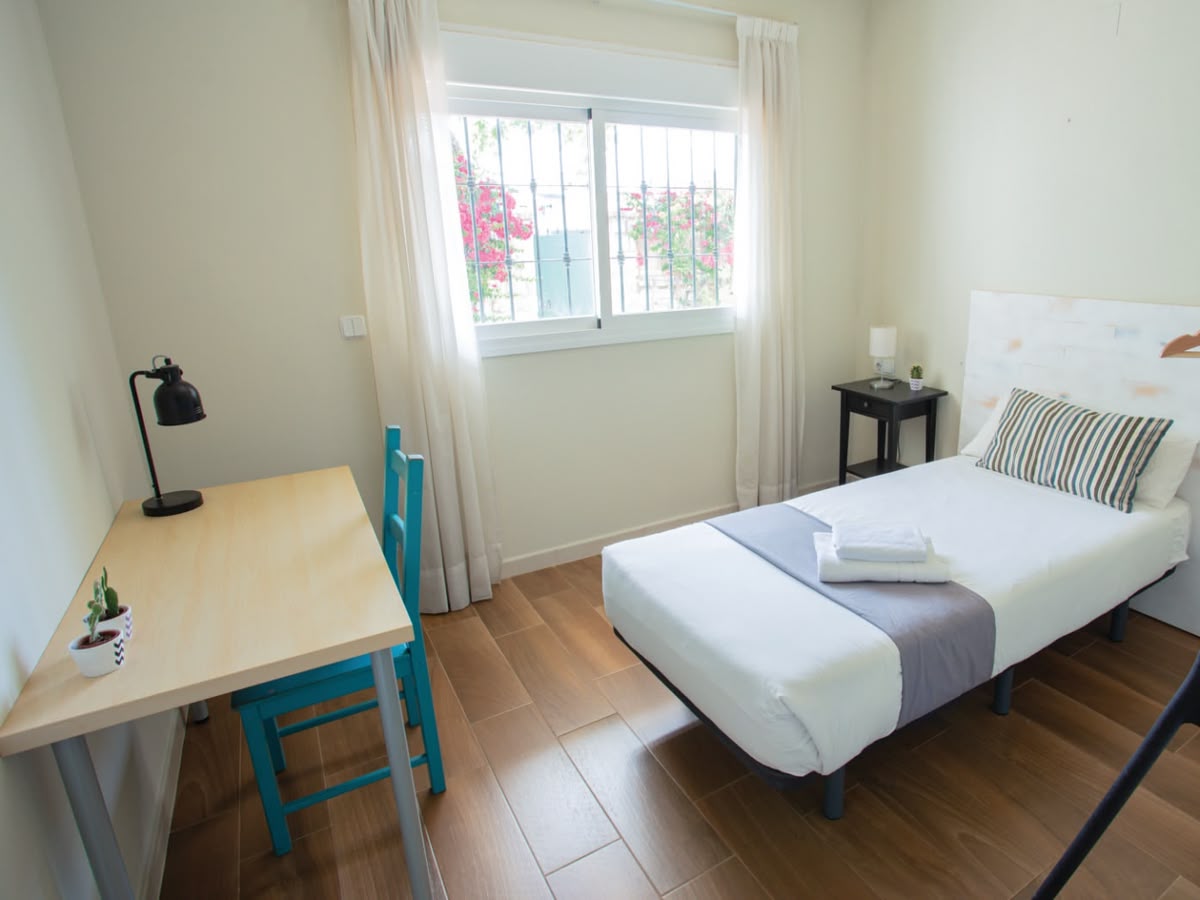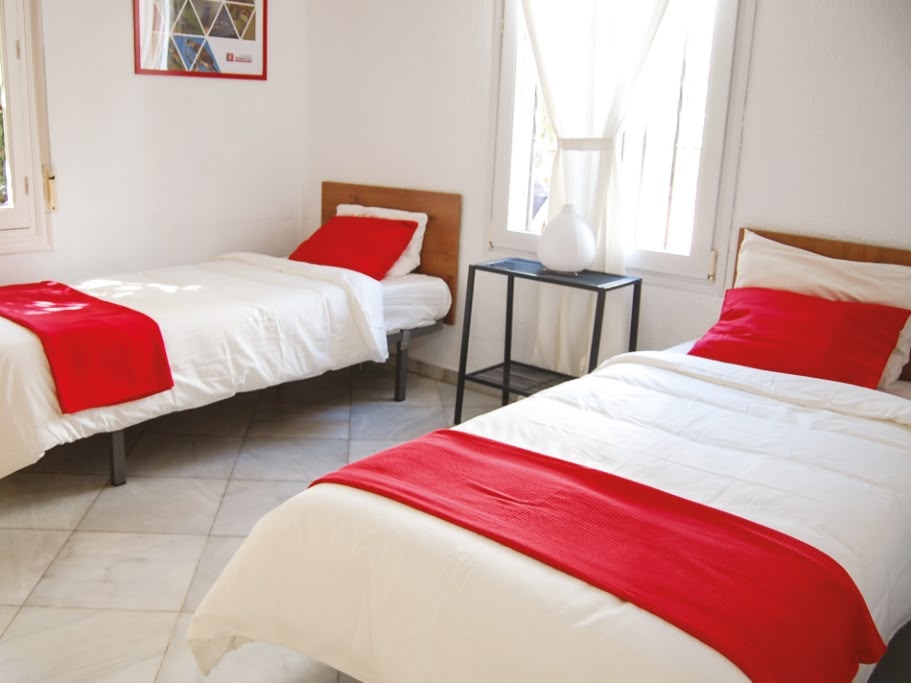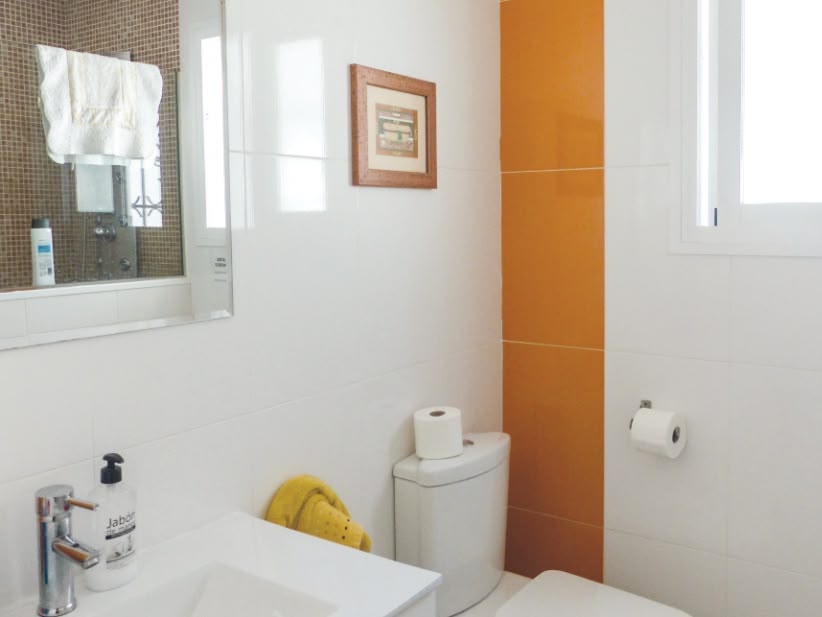Learn Spanish Barcelona
Study Spanish with Languages Abroad!
Learning Spanish in Barcelona offers a dynamic and immersive experience, blending language acquisition with the vibrant culture of one of Spain's most iconic cities. Enrolling in a Spanish course here not only helps you master the language through structured classes and dedicated instructors but also provides the opportunity to practice in real-world settings.
Catalunya's capital is without a doubt one of the most popular, beautiful and culturally-rich cities in Europe.
Barcelona's rich cultural tapestry-ranging from its historic Gothic Quarter and stunning modernist architecture to its lively markets and tapas bars-serves as a living classroom where you can engage with native speakers and experience Spanish in its natural context.
The city's blend of traditional and contemporary influences, combined with its warm Mediterranean climate, creates an ideal environment for language learners.
Outside of the classroom, students can participate in local festivals, explore renowned landmarks like La Sagrada Familia and Park Güell, and enjoy a thriving arts and music scene, all while practicing Spanish in everyday interactions and gaining full language immersion . This immersive approach not only enhances linguistic skills but also deepens cultural understanding, making learning Spanish in Barcelona a uniquely enriching experience. Languages Abroad offers one of the best Spanish schools Barcelona.

6 weeks Incl. course & accommodation
Start your adventure in Barcelona with Languages Abroad today!
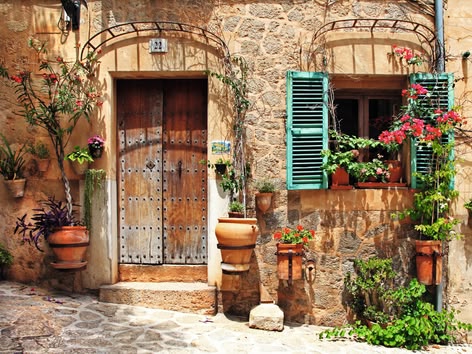
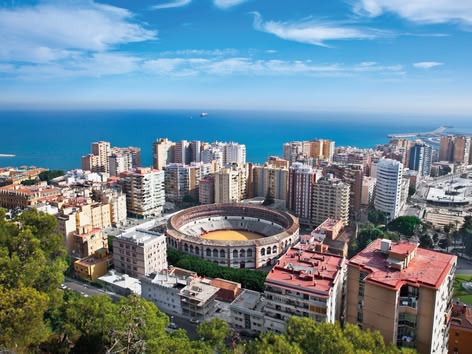
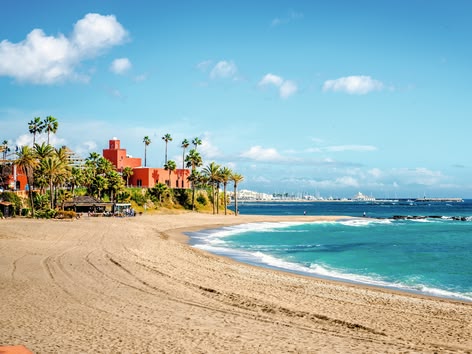
Learn Spanish
Experience exceptional Spanish language education at a centrally located school in Barcelona. Benefit from expert teachers and engaging lessons, and enjoy a welcoming learning environment that provides the community spirit, individual support and practical resources needed to grow and excel. Choose from a variety of course options and begin your Spanish language journey with us today!
Spanish Schools Barcelona
The school is typically located in the heart of Barcelona, making it convenient to explore the city's attractions and vibrant neighborhoods.
This location is in the Eixample district, known for its beautiful architecture and proximity to many of Barcelona's main attractions. It's a vibrant area with easy access to public transportation, restaurants, and shops, making it convenient for students to explore the city while studying.
13 bright and spacious classrooms with air-conditioning
Rooftop terrace
Student Lounge
School Cafeteria
TV Room
Computer Lab
Internet
Information desk for excursions, car rental, phone cards, etc.
Barcelona Spanish Courses
All of our teachers are friendly, experienced, and qualified. Your classes will help enhance your speaking, listening, grammar, and general comprehension skills. Teachers often facilitate classroom discussions by using role-playing and games, and our teachers also incorporate current events and cultural materials into the curriculum to help make classes more interesting and relatable.
- Open to all language levels, A0-B2
- Placement test on the first Monday morning of class
- Minimum age 16
- Flexible course length (1 week minimum)
- Classes held Monday to Friday
- Language Certificate provided at end of course
Course starting dates for all levels (except beginners): Every Monday from January 8 to December 21, 2024. Course starting dates for beginners 2024:
January 8, February 5, March 4, April 1, May 6, June 3, July 1+15+29, August 12, September 2, October 7, November 4, December 2
2025: January 6, February 3, March 3.

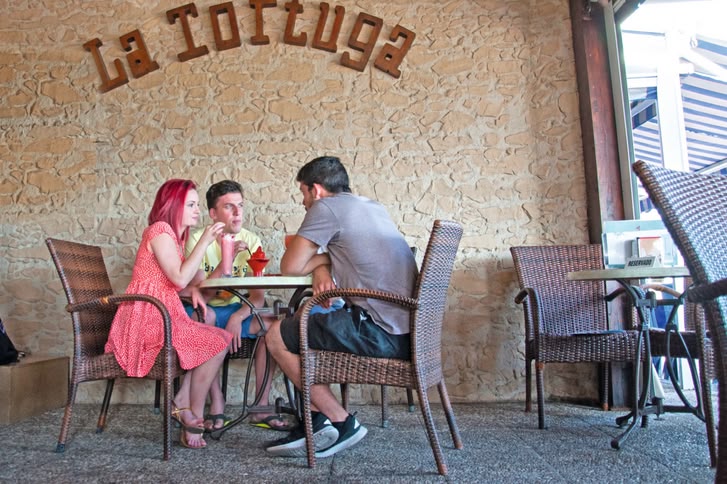
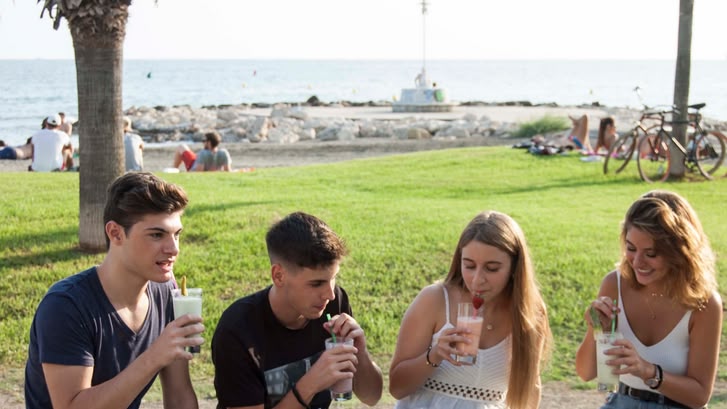
Standard English Classes
- 20 group lessons per week
- Max. 10 students per class
Intensive English Classes
- 30 group lessons per week
- Max. 10 students per class
Accommodation in Barcelona
Welcome to your home away from home in Barcelona! Choose from comfortable university accommodations or stay with a welcoming host family in this lively and diverse city. Whether you prefer the convenience of living on campus or the enriching experience of a homestay, we ensure a safe, enjoyable, and immersive stay to complement your language learning journey.
Apartments
Facilities
Apartments are located about 20-30 minutes from the school and are shared with other students.
Apartments are co-ed, however, bedrooms are same-gender.
The apartments include a well-equipped kitchen, shared bathroom and living areas.
Room Options
- Residence/Full Board
International students share kitchen/lounge, bathroom, refrigerator, TV, terrace, laundry, WiFi.
After Class Activities in Barcelona
After class, students can explore the vibrant Gothic Quarter, discovering hidden cafés, local shops, and historic landmarks. They can unwind at Barceloneta Beach, perfect for relaxing or playing beach sports, or take a scenic walk through Park Güell, where they'll experience breathtaking views of the city and Gaudí's artistic genius.
Sagrada Familia - Designed by the famous architect Antoni Gaudí, this iconic basilica is an architectural masterpiece, known for its intricate details and towering spires. It's still under construction, but visitors can tour both the interior and exterior.
Park Güell - Another Gaudí creation, this vibrant park is filled with colorful mosaics, unique sculptures, and offers a fantastic view of Barcelona from its hilltop location. The park feels like a whimsical fairytale land.
La Rambla - This famous pedestrian street stretches through the heart of Barcelona, bustling with shops, restaurants, and street performers. It's the perfect place to soak in the lively atmosphere of the city.
Gothic Quarter (Barri Gòtic) - Wander through this medieval maze of narrow streets to discover historic buildings, charming squares, and hidden gems. Key sights include the Barcelona Cathedral and the Plaça Reial.
Casa Batlló - A stunning modernist building designed by Gaudí, Casa Batlló stands out with its wavy façade, dragon-like roof, and colorful ceramic tiles. The interior is just as impressive, with imaginative designs and unique lighting.
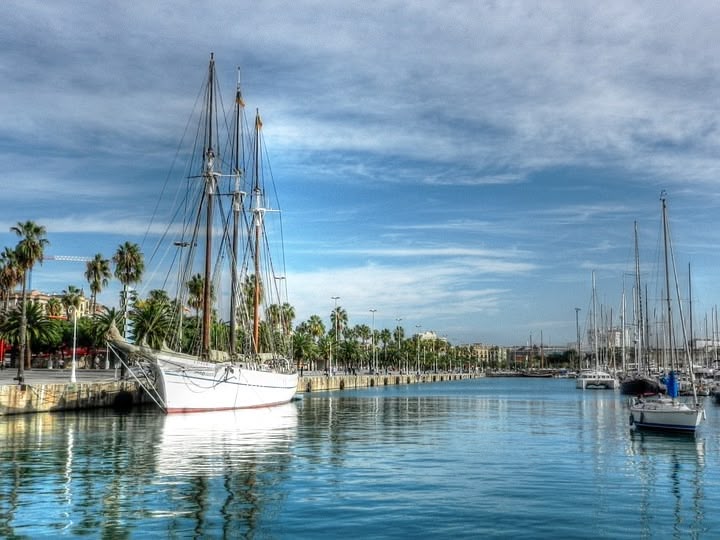
Dates & Prices
Start your Spanish language journey!
Barcelona is a very artistic and diverse city. It's so popular that recently the city had to ban the construction of new hotels as the sheer number of tourists in the city was starting to slow its development. However, if you want to go you're more than able to with Languages Abroad, and you might consider spending a Spanish summer here as well!
All over the city you'll find little galleries and even more cafes and restaurants serving up the latest creations. While in Barcelona you'll have no trouble absorbing the local culture and history of this truly beautiful city!
Checklist
Course Enrollment Fee: €60
Accommodation Placement Fee: €80
Letter of Acceptance for Visa Purposes: €50 (non-refundable)
Placement test & certificate included in the price
Textbooks at school 8on loan from EUR 4/week, EUR 15 deposit) or on sale
Notes
The school will be closed on all public holidays in 2024.
August:15
Seasonal break 2024: August 25- June 2025
Barcelona City Guide
General Information
Barcelona, the vibrant capital of Catalonia, is a city that seamlessly blends rich history with modern energy. Nestled between the Mediterranean Sea and scenic hills, it's Spain's second-largest city, home to 1.6 million residents. Known for its unique architecture, dynamic cultural scene, and sun-soaked beaches, Barcelona is a favorite destination for students eager to immerse themselves in Spanish (or Catalan!) and soak in the city's creative energy.
The city's layout combines historic quarters like the Gothic Quarter with modernist marvels by Antoni Gaudí, including the world-famous Sagrada Família. Barcelona is not just a feast for the eyes but also a haven for foodies, with its tapas culture, bustling markets like La Boqueria, and world-class dining experiences. Its Mediterranean climate ensures pleasant weather year-round, making it an ideal place to explore, learn, and thrive.
Key Highlights
Sagrada Familia
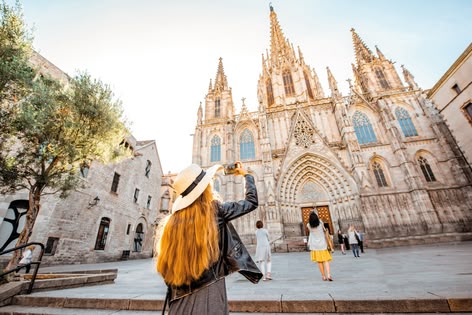
The Sagrada Família is Antoni Gaudí's most famous masterpiece and an iconic symbol of Barcelona. This breathtaking basilica combines Gothic and Art Nouveau styles with intricate facades and stunning stained glass. Still under construction, it's a must-visit landmark that offers unparalleled architectural and spiritual inspiration.
Park Güell
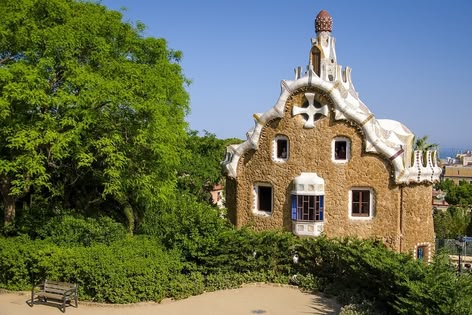
Park Güell is a whimsical wonderland designed by Gaudí, featuring colorful mosaics, playful sculptures, and sweeping views of Barcelona. Highlights include the iconic salamander sculpture, "El Drac," and the undulating terrace benches. The park's enchanting design makes it a top destination for
Casa Batlló
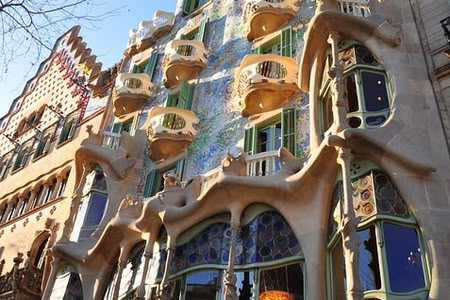
Casa Batlló is a stunning modernist masterpiece by Antoni Gaudí, known for its colorful, mosaic-covered façade and wave-like design. Inspired by nature, its interiors feature unique details like skeletal staircases and stained glass windows. Located on Passeig de Gràcia, it's a must-see for art and architecture enthusiasts visiting Barcelona.
Why visit Barcelona?
Barcelona, the vibrant capital of Catalonia, is a city that seamlessly blends rich history with modern energy. Nestled between the Mediterranean Sea and scenic hills, it's Spain's second-largest city, home to 1.6 million residents. Known for its unique architecture, dynamic cultural scene, and sun-soaked beaches, Barcelona is a favorite destination for students eager to immerse themselves in Spanish (or Catalan!) and soak in the city's creative energy.
The city's layout combines historic quarters like the Gothic Quarter with modernist marvels by Antoni Gaudí, including the world-famous Sagrada Família. Barcelona is not just a feast for the eyes but also a haven for foodies, with its tapas culture, bustling markets like La Boqueria, and world-class dining experiences. Its Mediterranean climate ensures pleasant weather year-round, making it an ideal place to explore, learn, and thrive.
Getting there
- By Air: Barcelona-El Prat Airport (BCN) is well-connected to major international destinations, with direct flights from across Europe and beyond. A 20-minute train or Aerobús ride takes you to the city center.
- By Train: Barcelona Sants station offers high-speed AVE trains connecting to Madrid, Paris, and other major cities.
- By Bus: Long-distance buses like FlixBus and ALSA provide affordable travel options to and from Barcelona.
- By Sea: The Port of Barcelona welcomes cruise ships and ferries from Mediterranean destinations like Italy and the Balearic Islands.
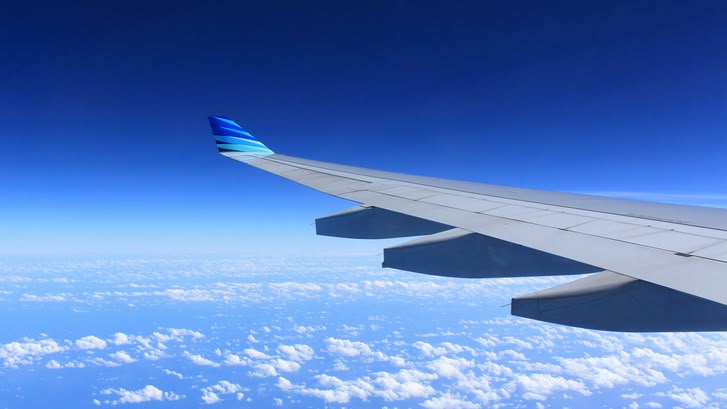
Getting around
- Metro: Barcelona's metro system is efficient and easy to navigate, with extensive coverage across the city.
- Buses and Trams: The city's bus and tram networks are reliable and ideal for reaching areas not served by the metro.
- Cycling: Rent a bike or use Bicing, Barcelona's public bike-sharing system, to explore the city on two wheels.
- Walking: Many attractions are within walking distance, making it a great city to explore on foot.
- Taxis and Ridesharing: Taxis are readily available, and apps like Uber and Cabify operate in the city.
- Multi-Day Travel Cards: Save money with passes like the Hola Barcelona Travel Card, which offers unlimited public transport for up to five days.
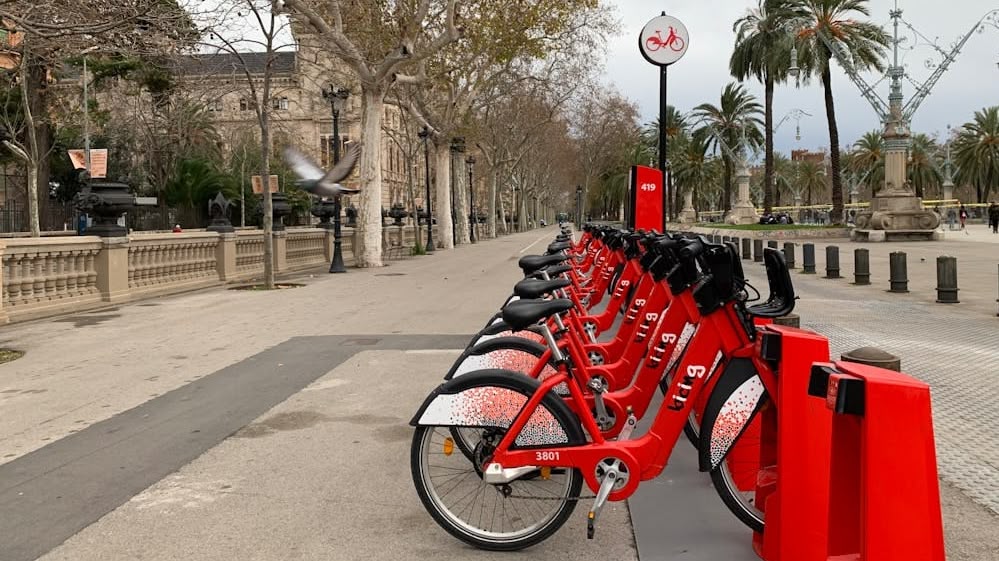
Activities
- Cultural Tours: Join a guided tour of the Gothic Quarter or learn about Gaudí's architecture on a walking tour.
- Beach Days: Soak up the sun or enjoy water sports at Barceloneta or Bogatell Beach.
- Sports: Catch a soccer match or tour Camp Nou, the home of FC Barcelona.
- Art and History: Visit the Picasso Museum, Joan Miró Foundation, and Museu d'Història de Barcelona.
- Food Experiences: Take a tapas cooking class or enjoy a wine-tasting tour in nearby Penedès.
- Day Trips: Explore Montserrat Monastery, Sitges, or the Costa Brava for a change of scenery.
- Nightlife: Dance the night away at clubs like Opium or relax with drinks at rooftop bars like Skybar.
- Festivals: Don't miss La Mercè in September or Sant Jordi Day in April, when the city comes alive with celebrations.
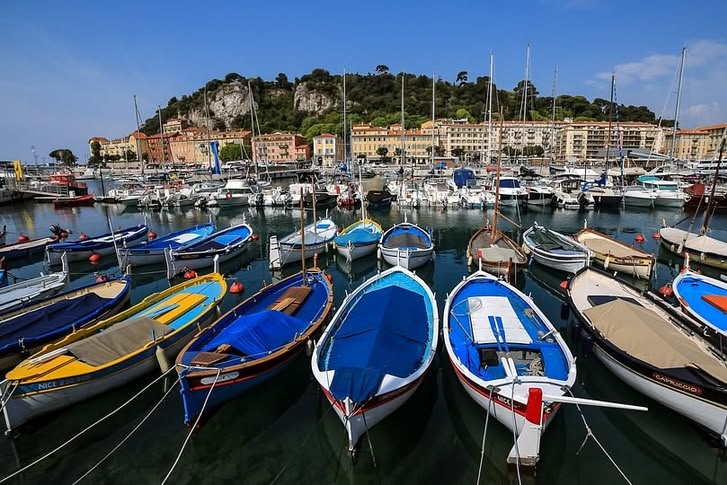
Shopping
- Passeig de Gràcia: Barcelona's luxury shopping street, featuring brands like Chanel, Louis Vuitton, and local designer shops.
- La Rambla: Discover souvenirs, books, and unique finds in the shops along this iconic boulevard.
- El Born District: Known for its artisan boutiques, vintage stores, and trendy fashion outlets.
- Mercat de Sant Antoni: A revamped market offering fresh produce, clothing, and second-hand books.
- La Boqueria Market: A food lover's paradise with fresh produce, seafood, and artisanal snacks.
- Diagonal Mar: One of Barcelona's largest shopping malls, offering international brands and dining options.
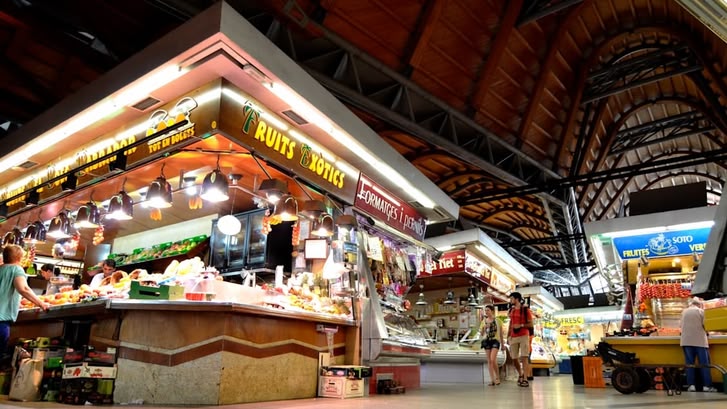
Where to Eat
- Tapas Bars: Enjoy classic dishes like patatas bravas, jamón ibérico, and pan con tomate at local spots like Bar Lobo or Ciudad Condal.
- Seafood: Head to Barceloneta for fresh paella and grilled fish at restaurants like Can Solé.
- Casual Dining: Grab a quick meal at 100 Montaditos or enjoy authentic bocadillos from a local deli.
- Markets: Pick up fresh snacks or gourmet meals at La Boqueria or Mercat de Sant Antoni.
- Sweet Treats: Don't miss churros con chocolate from Granja Dulcinea or creamy gelato from Gocce di Latte.
- Budget-Friendly Options: Look for menu del día (set menus) at local restaurants for an affordable and hearty lunch.
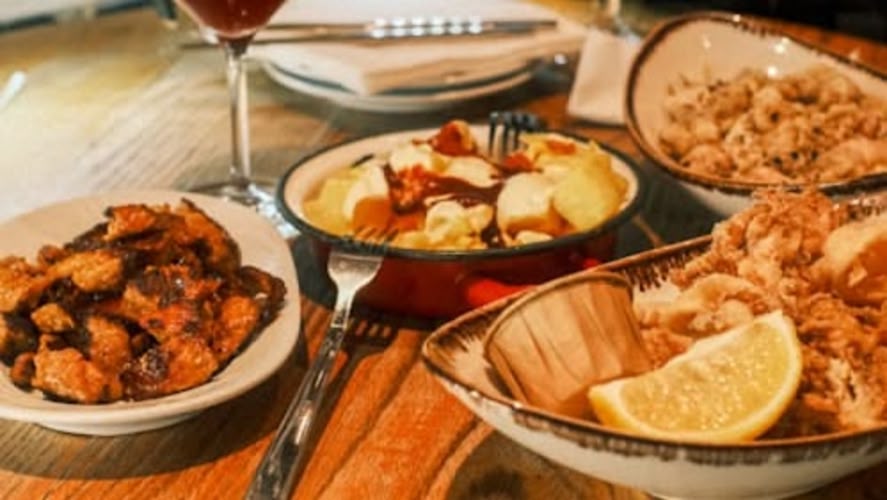
Nightlife
Barcelona's nightlife is legendary, offering something for everyone, from laid-back bars to energetic nightclubs. The Gothic Quarter is perfect for cozy cocktail bars and hidden speakeasies, while El Born boasts trendy spots with creative drinks and live music. For a more upscale experience, head to Eixample, known for its chic lounges and rooftop bars.
If you're ready to dance, beachside clubs like Opium and Pacha on the Port Olímpic strip are the place to be. Whether you're sipping sangria under the stars or dancing till dawn, Barcelona's vibrant nightlife guarantees an unforgettable evening.
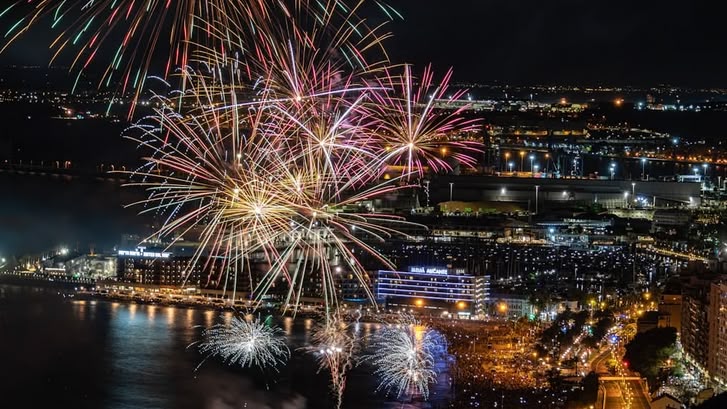
Money-Saving Tips
Visiting Barcelona on a budget is entirely possible with a bit of planning and smart choices. Save on airport transfers by taking the Aerobús, which costs just €12.50 for a round trip, or opt for public transport passes to explore the city affordably. Time your visit for the first Sunday of the month, when many museums, including the Picasso Museum and Montjuïc Castle, offer free entry. Consider a winter trip for lower accommodation rates and unique experiences like the Llum festival or a ski day in the Pyrenees.
Stay in charming neighborhoods like Gràcia, Poble Sec, or Poblenou for cheaper accommodations away from the touristy center. Walk as much as possible, as Barcelona's compact layout is perfect for exploring on foot, and pack a picnic to enjoy in spots like Parc de la Ciutadella or Montjuïc gardens. Look out for budget-friendly dining options such as tapas, pintxos, or the menu del dia, offering two courses and a drink for €10-20. For sightseeing, join a free walking tour to learn about the city without splurging, and prioritize the architectural landmarks you want to visit, as appreciating Gaudí's masterpieces from the outside is just as rewarding. By following these tips, you can enjoy Barcelona's charm without breaking the bank!
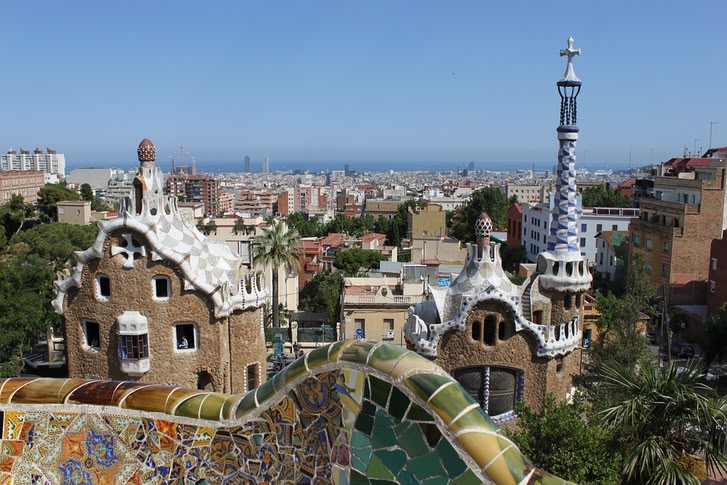
Insider Tips for Barcelona: Beyond the Usual Guidebook
Gràcia's Hidden Gems
The Gràcia neighborhood is a treasure trove of local life, far from the tourist-heavy streets of central Barcelona. Wander its charming squares like Plaça del Sol and Plaça de la Vila de Gràcia, where you'll find affordable cafes, live music, and authentic Catalan culture.
Bunkers del Carmel for Sunset
While many flock to Park Güell for city views, locals know the best panoramic spot is the Bunkers del Carmel. These former anti-aircraft bunkers offer stunning 360-degree views of Barcelona, especially at sunset, and are a favorite hangout for students and young travelers.
Free Museum Days
Many museums in Barcelona offer free entry on specific days. For example, the Picasso Museum and the Museu Nacional d'Art de Catalunya (MNAC) are free on the first Sunday of the month. Check schedules for cultural freebies.
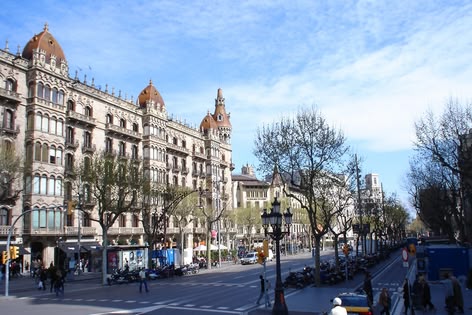
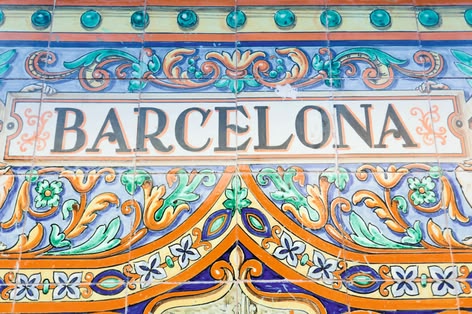
Poblenou's Art and Beaches
Escape the crowds of Barceloneta Beach by heading to Poblenou, a laid-back district known for its urban art and quieter beaches. Check out the Poblenou Cemetery, which is both eerie and artistic, or stroll along Bogatell Beach for a more serene seaside experience.
Montjuïc's Magic Nights
While the Magic Fountain of Montjuïc is a popular attraction, many visitors miss the evening light shows combined with music. Nearby, the Montjuïc Castle hosts outdoor film screenings and concerts during summer, offering a unique way to enjoy the hill's views and atmosphere.
Carrer Blai for Tapas Crawling
Forget La Rambla for tapas and head to Carrer Blai in the Poble Sec neighborhood. This pedestrian street is lined with affordable pintxos bars, where you can sample delicious snacks for just €1-€2 each.
Contact us
We're here to help you on your Spanish language learning journey!
Questions about our courses? Need assistance with enrollment? Interested in finding out more about our programs?
Our friendly team is more than willing to assist you.
Contact us by clicking the link below and filling out our contact form.
We promise a prompt and helpful response to all your inquiries.

